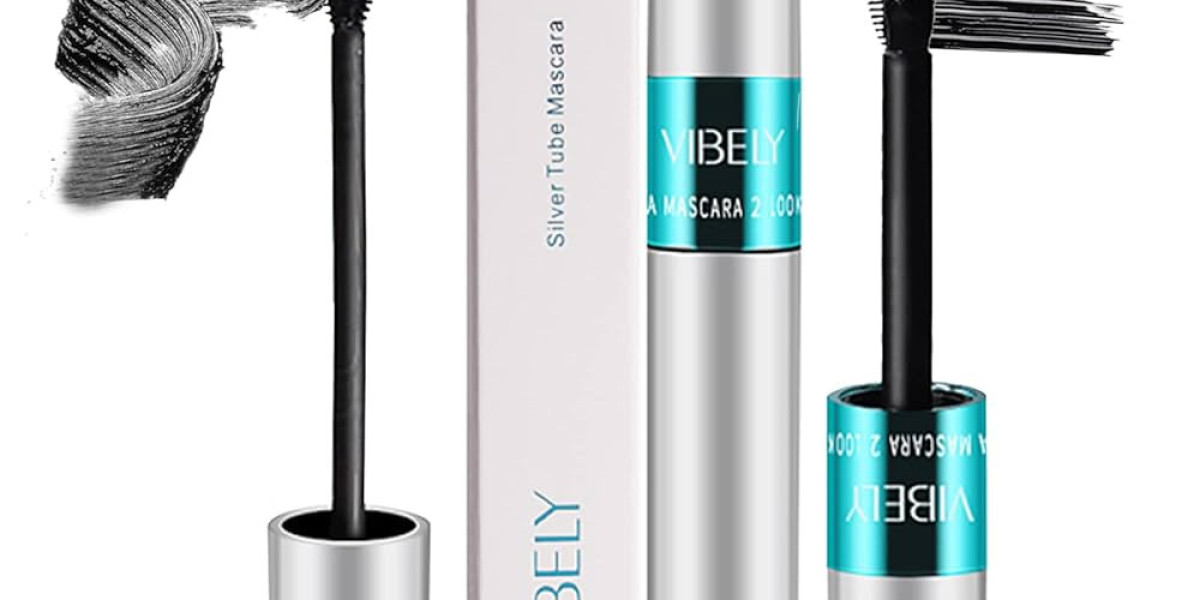Mechanical-ventilation is a lifeline for patients who cannot breathe adequately. It is crucial in intensive care units, operating rooms, and emergency settings. As critical as it is, the world of mechanical ventilation can seem daunting with its array of modes and techniques. Understanding these options helps healthcare professionals make informed choices tailored to individual patient needs.
But what exactly are the different modes available? What factors should guide your decision-making process? And how has technology reshaped our approach to mechanical-ventilation? This blog explores these compelling topics while shedding light on recent advancements that promise improved patient outcomes everywhere. Whether you’re a seasoned practitioner or new to this field, there’s something here for everyone interested in mastering the art and science of mechanical-ventilation. Let’s dive into this essential aspect of modern medicine together!
Types of Mechanical-ventilation Modes
Mechanical-ventilation modes are essential for managing patients with respiratory failure. Each mode serves different purposes based on the patient's condition.
- The assist-control (AC) mode allows patients to initiate breaths, but the ventilator ensures a minimum number of breaths per minute. This model is beneficial for those who can breathe but need assistance.
- Synchronized Intermittent Mandatory Ventilation (SIMV) combines mandatory and spontaneous breaths. It helps gradually wean patients off the ventilator while allowing them to take extra breaths as needed.
- On the other hand, pressure Support Ventilation (PSV) supports each breath initiated by the patient with a preset pressure level. This promotes comfort and reduces breathing work during recovery.
Continuous Positive Airway Pressure (CPAP) maintains airway pressure throughout the respiratory cycle without delivering additional breaths. It's often used for sleep apnea or in weaning trials after mechanical-ventilation.
Pros and Cons of Each Mode
When selecting a mode of mechanical-ventilation, understanding the pros and cons is essential for optimizing patient care.
Volume control modes ensure consistent tidal volumes, making them reliable for patients with fixed lung compliance. However, if not monitored closely, they may cause over-distension.
Pressure control modes protect against barotrauma by limiting peak airway pressures. Yet, this can lead to variable tidal volumes that compromise adequate ventilation in specific scenarios.
Assisted ventilation encourages spontaneous breathing while supporting respiratory effort. It promotes diaphragmatic function but can be challenging to synchronize with some patients with irregular breathing patterns.
High-frequency oscillatory ventilation offers potential benefits for patients with acute respiratory distress syndrome (ARDS) by minimising lung injury from traditional methods. Nonetheless, it requires specialised equipment and expertise that may not be readily available in all settings.
Selecting the proper mode hinges on balancing these advantages and disadvantages based on individual patient needs and clinical circumstances.
Factors to Consider When Choosing a Mode
Selecting the right mode of mechanical-ventilation requires careful consideration of various factors.
- Patient characteristics play a crucial role. Age, weight, and underlying health conditions can influence the choice.
- Next, consider the extent of respiratory failure. Different modes cater to specific levels—whether it’s acute or chronic situations, demands attention. The clinician's familiarity with each mode also matters significantly.
- Clinical goals are another critical element. Is your aim to maintain spontaneous breathing? Or does complete control over ventilation take priority?
- Don’t overlook patient comfort either. Modes that allow for more interaction and responsiveness often lead to better outcomes.
The available technology in your facility can also dictate options. Advanced machines may offer sophisticated features that enhance care but come with steeper learning curves for staff members.
Advancements in Mechanical-ventilation Technology
In recent years, significant strides have been made in mechanical-ventilation technology, enhancing patient care and outcomes. Innovations like high-frequency oscillatory ventilation (HFOV) are gaining traction, allowing for more gentle lung protective strategies.
Additionally, smart ventilators with artificial intelligence can now adapt settings based on real-time data. This means they adjust pressures and volumes automatically to more effectively meet individual patient needs.
Portable ventilators have revolutionised transport capabilities. These devices offer essential support outside critical care units while ensuring the same level of monitored therapy.
Telemedicine also plays a role by enabling remote monitoring of patients on mechanical-ventilation. Clinicians can assess conditions without being physically present, reducing infection risks and improving efficiency.
With ongoing research into biocompatible materials, future devices promise even greater comfort and reduced lung injury risk for patients requiring respiratory support.
Weaning from Mechanical-ventilation: Strategies and Challenges
Weaning from mechanical-ventilation is a crucial phase in patient recovery. It requires careful assessment and tailored strategies to ensure success.
One effective approach is to gradually reduce the support provided by the ventilator. This allows patients to adapt progressively, promoting their ability to breathe independently. Spontaneous breathing trials can help gauge readiness for extubation.
Challenges often arise during this process. Patients may exhibit anxiety or respiratory distress, complicating their transition away from mechanical support. Close monitoring and effective communication with patients and families about what to expect are essential.
Collaboration within the healthcare team plays a pivotal role in overcoming these hurdles. Respiratory therapists, nurses, and physicians must align on care plans and objectives while remaining flexible to individual needs.
Weaning demands patience and persistence, but holds significant potential for restoring autonomy in breathing function after critical illness.
Advanced Techniques in Mechanical-ventilation Management
Advanced techniques in mechanical-ventilation management have transformed patient care. Strategies such as lung-protective ventilation focus on minimising ventilator-induced lung injury. This involves using lower tidal volumes and keeping plateau pressures low.
- Another innovative approach is adaptive support ventilation (ASV). ASV adjusts pressure support levels based on real-time patient breathing feedback, improving comfort and synchrony.
- High-frequency oscillatory ventilation (HFOV) offers a different path, particularly for patients with severe ARDS. It uses rapid respiratory rates with small tidal volumes to enhance gas exchange while reducing barotrauma risk.
- Prone positioning during mechanical-ventilation has also gained traction. By optimising lung perfusion and recruitment, this technique can significantly improve oxygenation in critically ill patients.
Utilising advanced monitoring technologies helps clinicians make informed decisions about settings and weaning strategies, ultimately enhancing patient outcomes across various clinical scenarios.
Non-Invasive vs. Invasive Mechanical-ventilation: A Clinical Comparison
Non-invasive mechanical-ventilation (NIV) uses masks or nasal devices to deliver air without intubation. This method is often preferred in cases of respiratory distress, as it can enhance patient comfort and reduce the risk of complications associated with invasive techniques. Conversely, invasive mechanical-ventilation requires endotracheal tubes or tracheostomy. While this approach can provide more precise control over ventilation parameters, it carries higher risks, such as infection and injury to the airway.
The choice between NIV and invasive methods largely depends on the patient's condition. Some patients may respond well to non-invasive support early on, avoiding potential complications from intubation. However, rapid deterioration might necessitate a switch to invasive measures for adequate oxygenation and carbon dioxide removal. Clinical scenarios are crucial in guiding these decisions, ensuring that each patient's needs are appropriately met while balancing benefits against risks.
Mechanical-ventilation During Surgery: Anesthesia and Beyond
Mechanical-ventilation plays a crucial role during surgical procedures. It ensures that patients receive adequate oxygenation and carbon dioxide removal under anesthesia. Anesthesia can significantly alter respiratory mechanics. Consequently, precise control of ventilation settings is essential to accommodate changes in lung compliance and airway resistance.
During surgery, anesthesiologists continuously monitor ventilatory parameters to maintain optimal gas exchange. They may adjust tidal volumes or respiratory rates based on real-time feedback from the patient’s physiological responses.
Additionally, specialised ventilation modes are often used for different types of surgeries. For instance, protective lung strategies might be employed in thoracic operations to minimise potential lung injury. The collaboration between surgeons and anesthesiologists enhances patient safety. This teamwork ensures that mechanical support aligns with surgical requirements and individual patient needs throughout the procedure.
Impact of Mechanical-ventilation on Lung Injury: A Research Review
Mechanical-ventilation is a life-saving intervention, but can inadvertently contribute to lung injury. Research indicates that ventilator-induced lung injury (VILI) occurs when high tidal volumes and pressures stretch the alveoli, leading to inflammation and damage. Studies highlight the importance of protective ventilation strategies. Lower tidal volumes reduce the risk of barotrauma and volutrauma, minimising further harm. Adjusting positive end-expiratory pressure (PEEP) is critical in maintaining functional residual capacity and preventing atelectasis.
Additionally, recent investigations explore how mechanical-ventilation affects cellular responses within injured lungs. The interplay between mechanical forces and biological mechanisms is complex but crucial for developing better treatment protocols. Continued research aims to identify optimal ventilation parameters that are personalised for patients with pre-existing lung conditions or acute respiratory distress syndrome (ARDS). Understanding these dynamics promises safer practices that enhance recovery while minimising potential complications associated with mechanical support.
The Future of Mechanical-ventilation: Trends and Innovations
The future of mechanical ventilation is poised for a remarkable transformation. Innovations in artificial intelligence are creating more intelligent machines capable of adjusting settings based on real-time patient data. This personalised approach can enhance comfort and support recovery.
Wearable technology is also making waves. Devices that monitor respiratory rates and oxygen saturation will soon integrate with ventilators, providing seamless communication between patients and healthcare providers.
Furthermore, advancements in materials science are leading to lighter, more portable devices. These improvements could facilitate at-home ventilation options, granting patients greater independence while ensuring safety.
Telemedicine is also influencing mechanical-ventilation management. Remote consultations allow specialists to guide treatment adjustments without necessitating physical visits, enhancing accessibility for critically ill patients.
Integrating big data analytics promises deeper insights into patient outcomes, informing best practices in mechanical-ventilation strategies across diverse clinical settings.
Conclusion
As technology advances, clinicians are better equipped to optimise lung function and enhance recovery times. This is crucial for improving overall outcomes. Moreover, ongoing research sheds light on innovative techniques that promise to reshape practices in mechanical ventilation management. There's an exciting frontier ahead as we explore what lies beyond current capabilities. Understanding the intricate dynamics of both invasive and non-invasive methods can empower healthcare professionals to make informed decisions. These choices impact not only survival but also quality of life post-ventilation.
FAQs
What is the difference between invasive and non-invasive mechanical ventilation?
Invasive mechanical-ventilation involves placing a tube into the patient's airway, allowing for direct control over breathing support. Non-invasive options use masks or other devices to deliver air without intubation. Each method has its specific indications and benefits depending on the clinical scenario.
How do healthcare providers determine which mode of ventilation to use?
The choice of ventilatory mode depends on various factors, including the underlying condition being treated, patient comfort levels, and overall therapy goals. Clinicians evaluate these elements with monitoring data to decide which approach best supports respiratory function.
Can patients be weaned off mechanical-ventilation successfully?
Yes, many patients can be weaned off mechanical-ventilation successfully. Healthcare teams assess readiness through criteria such as stable vital signs and adequate respiratory effort before gradually reducing support levels. However, challenges may arise based on individual circumstances that require careful management throughout the process. Understanding these aspects helps demystify mechanical-ventilation's role in critical care settings while emphasising its significance in enhancing patient outcomes.
Related Business Listings |














